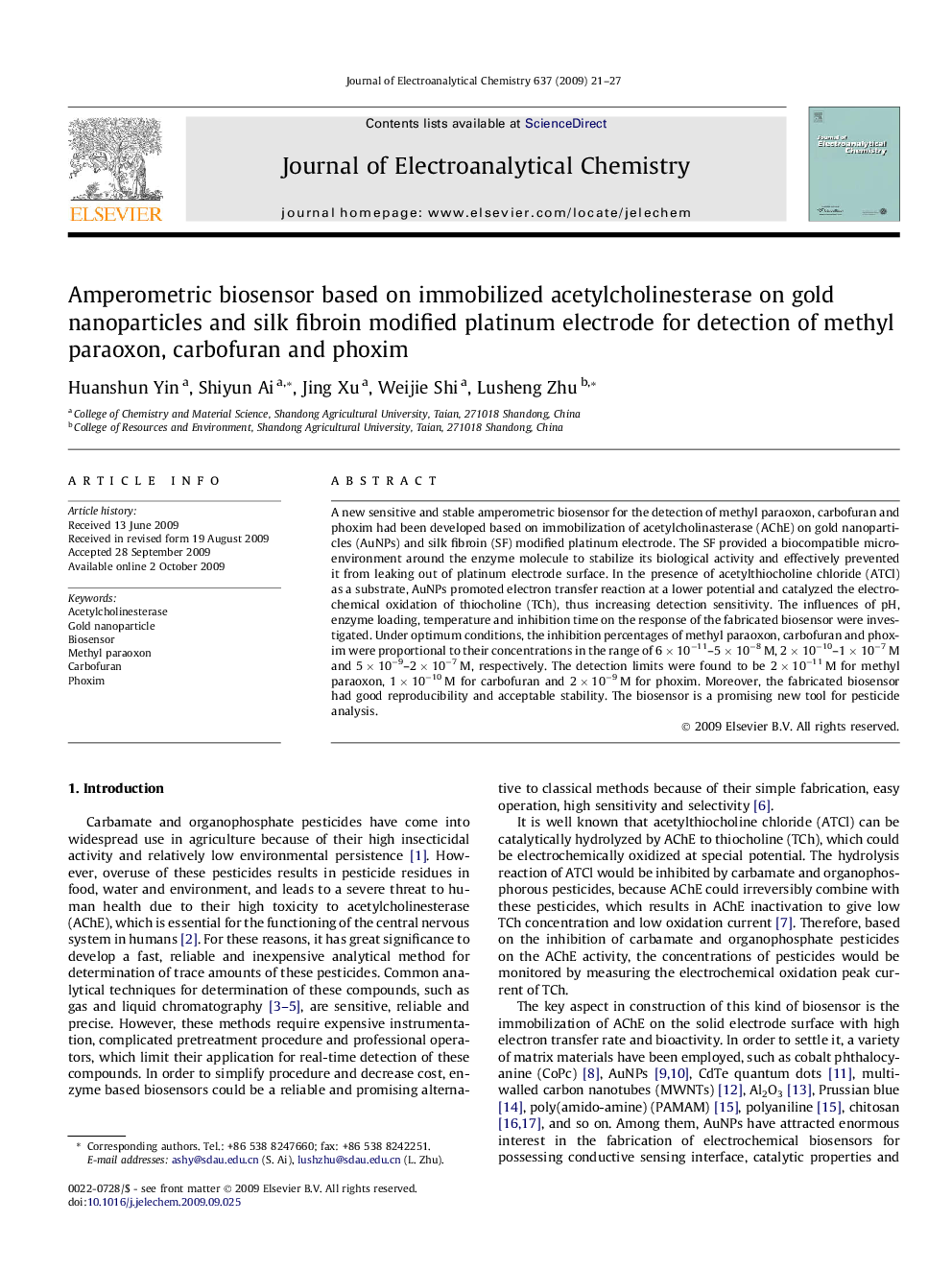| Article ID | Journal | Published Year | Pages | File Type |
|---|---|---|---|---|
| 220159 | Journal of Electroanalytical Chemistry | 2009 | 7 Pages |
A new sensitive and stable amperometric biosensor for the detection of methyl paraoxon, carbofuran and phoxim had been developed based on immobilization of acetylcholinasterase (AChE) on gold nanoparticles (AuNPs) and silk fibroin (SF) modified platinum electrode. The SF provided a biocompatible microenvironment around the enzyme molecule to stabilize its biological activity and effectively prevented it from leaking out of platinum electrode surface. In the presence of acetylthiocholine chloride (ATCl) as a substrate, AuNPs promoted electron transfer reaction at a lower potential and catalyzed the electrochemical oxidation of thiocholine (TCh), thus increasing detection sensitivity. The influences of pH, enzyme loading, temperature and inhibition time on the response of the fabricated biosensor were investigated. Under optimum conditions, the inhibition percentages of methyl paraoxon, carbofuran and phoxim were proportional to their concentrations in the range of 6 × 10−11–5 × 10−8 M, 2 × 10−10–1 × 10−7 M and 5 × 10−9–2 × 10−7 M, respectively. The detection limits were found to be 2 × 10−11 M for methyl paraoxon, 1 × 10−10 M for carbofuran and 2 × 10−9 M for phoxim. Moreover, the fabricated biosensor had good reproducibility and acceptable stability. The biosensor is a promising new tool for pesticide analysis.
